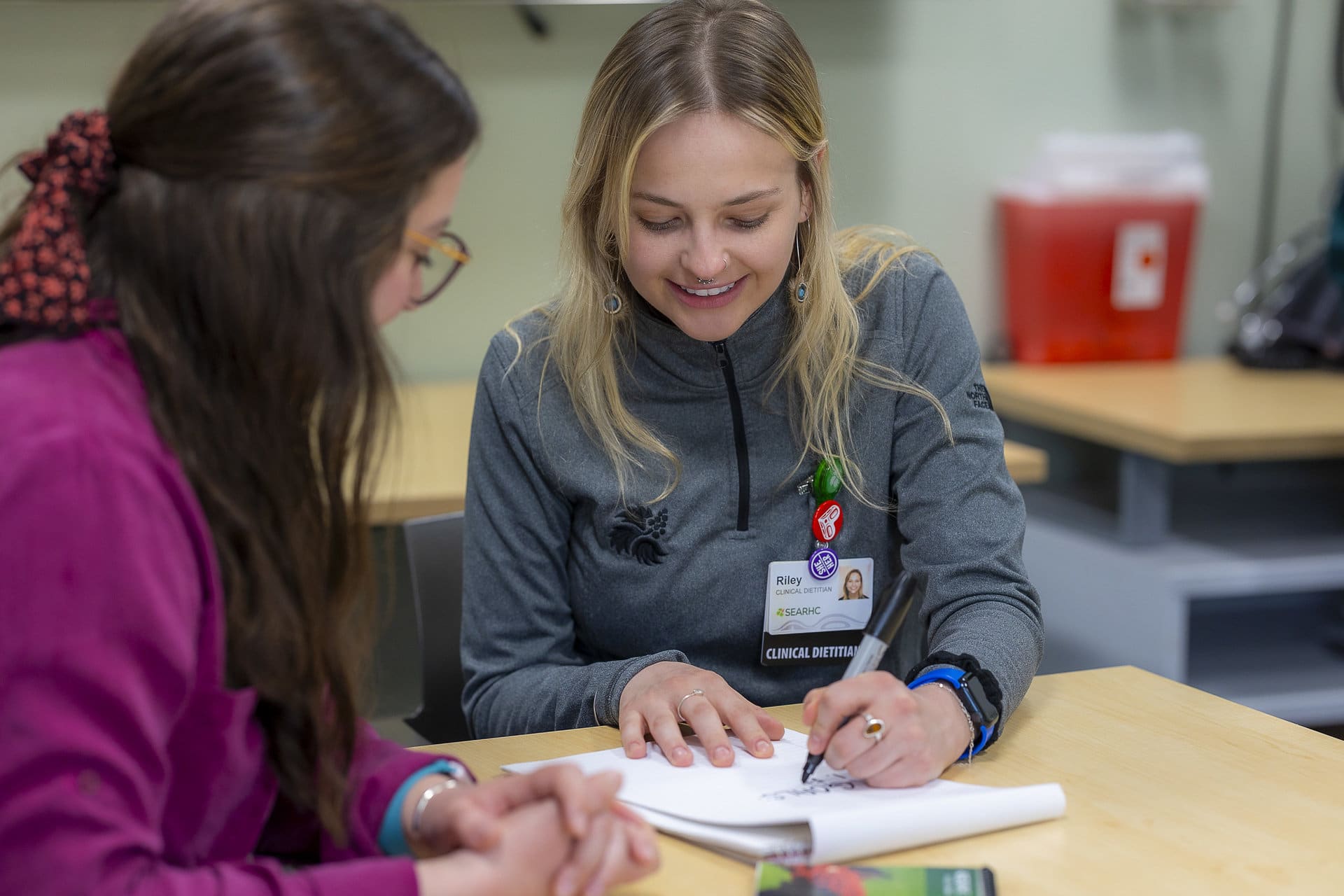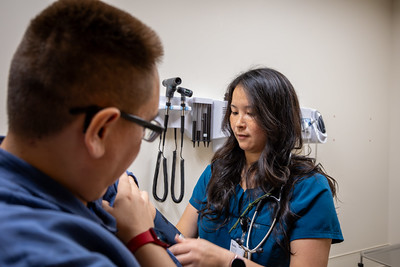Checking your blood sugar (or “blood glucose”) everyday can seem like a chore, especially if it requires poking your finger and drawing blood. It’s one of the reasons why a person with diabetes may decide it’s just not worth the effort and skip it all together. However, there is a device that can monitor a person’s blood glucose (BG) 24 hours a day without requiring a drop of blood. It’s called a continuous glucose monitor (CGM).
CGMs have been available for a while and have become more popular over the years. So, what exactly is a CGM? A CGM is a device that continuously monitors your BG 24 hours a day. There are three parts to CGMs—the sensor, transmitter and receiver. The sensor is typically round with adhesive on the back, so it sticks to your skin. The sensor has a tiny, flexible plastic tube (think fishing line size) that gets inserted just under the skin and measures glucose levels in the interstitial fluid. This is a fancy way of saying CGMs measure the sugar in the fluid between your cells rather than directly in your blood stream.
The transmitter sends data to a display device which shows your current blood sugar. A display device can be a smartphone app, a separate receiver (also called a reader), or an insulin pump. Newer CGMs have the sensor and transmitter in one device and can be as small as two pennies stacked on top of each other. CGMs are approved for adults to be worn on the back of their arms.
CGMs have other features that can help you track and manage your BG. Whether you are using an app on your phone or a reader, BG readings are saved and can be viewed to see current and past levels. Trend arrows show what direction your blood sugar is headed, and alarms can be set to notify you if your BG levels are too high or low.
You can also add notes to log when you eat food, exercise and take medication. This will help you and your provider see how diet, exercise and medication impact your BG. If you prefer to do telehealth visits, CGMs allow you to share your data remotely with your provider so they can see what your BG levels are without you having to come into the clinic. All these features give you a ton of information that can be used to help manage your BG and diabetes more effectively.
CGMs may sound like the best thing since sliced bread, but there are some things to consider before slapping one on your arm. Not every person with diabetes needs to check their BG that often. How often you need to check depends on many factors. For more specifics read the Monitoring Your Diabetes blog post.
Not all insurance companies cover the cost of a CGM, which means you would have to pay out of pocket if you wanted to use the device. The cost can add up, especially if you buy sensors every month. Certain medications such as acetaminophen (Tylenol), hydroxyurea and aspirin can interfere with CGMs depending on the brand. Even vitamin C in high doses may lead to inaccurate readings again, depending on the brand.
You may still have to use a glucometer to check your blood sugar, even if you are wearing a CGM. CGMs are Food and Drug Administration–approved and are accurate; however, since CGMs do not measure your BG directly from your blood, there may be differences in readings between a CGM and glucometer. For example, there is a delay between the number on your CGM and what is happening in your bloodstream. This may be an issue if your CGM is not giving a trend arrow or the number you are seeing does not match with what you are feeling. If your CGM tells you your BG is 56 mg/dL (low BG is < 70 md/dL), but you do not feel any signs or symptoms of low blood sugar (hypoglycemia), for instance, a meter can confirm whether you are truly low. For more information on when to use a glucometer when wearing a CGM, talk to your provider or diabetes care and education specialist.
Diabetes can be a challenging disease to manage. Whether you decide to use a CGM or not, it’s good to know what devices are available so you can choose the option that is best for you.





